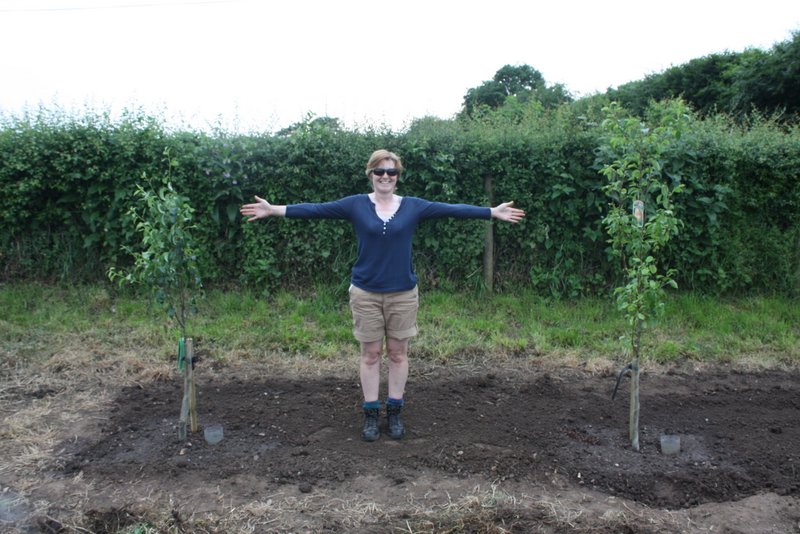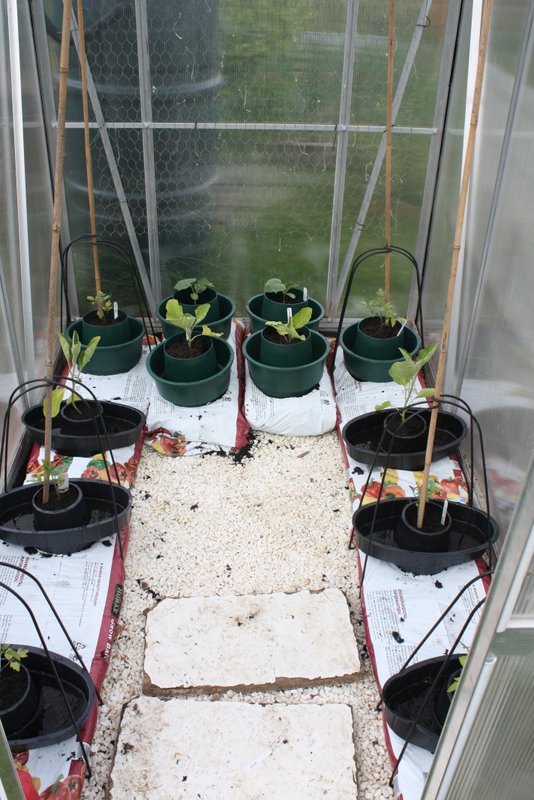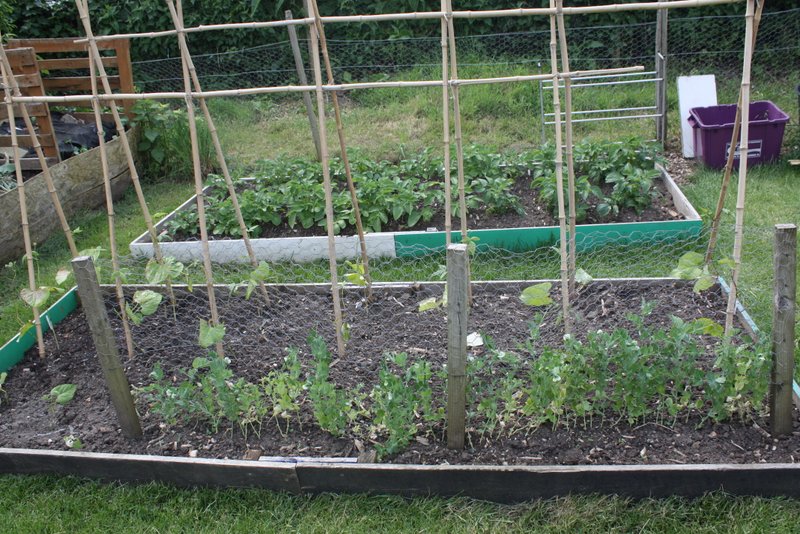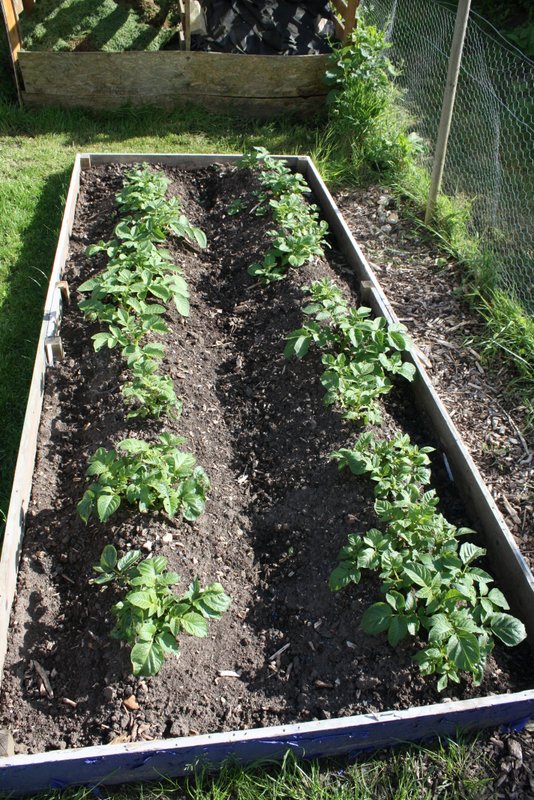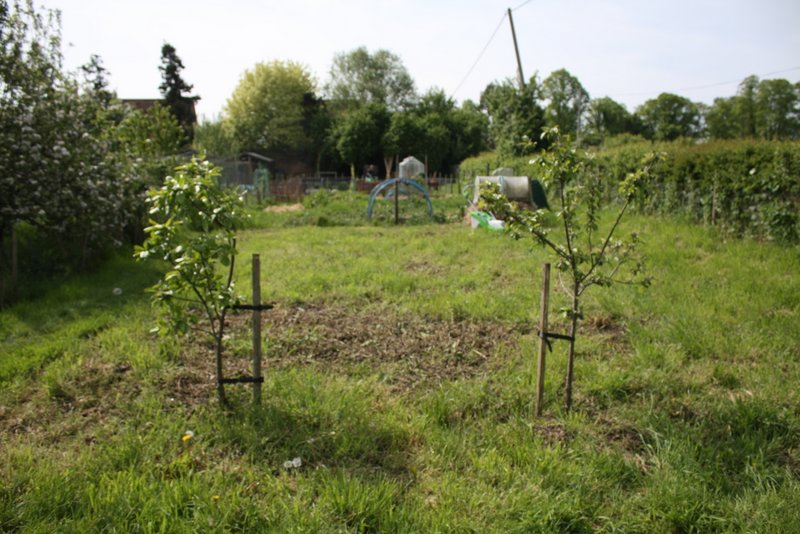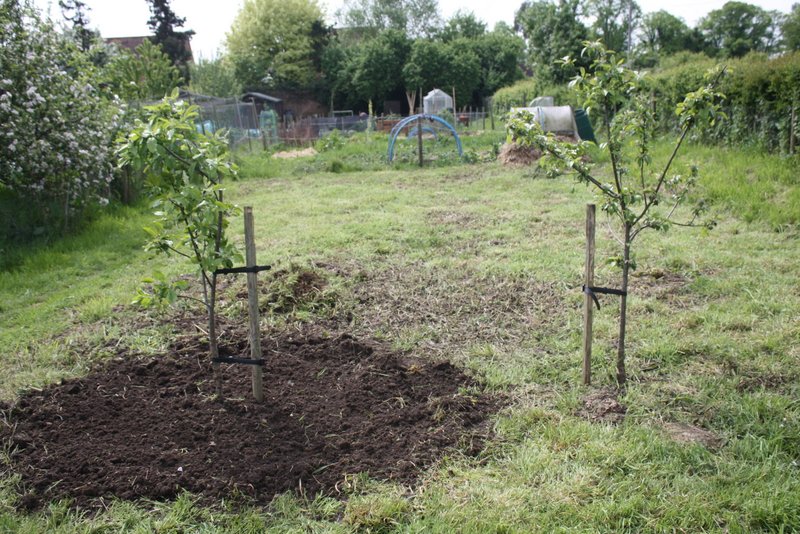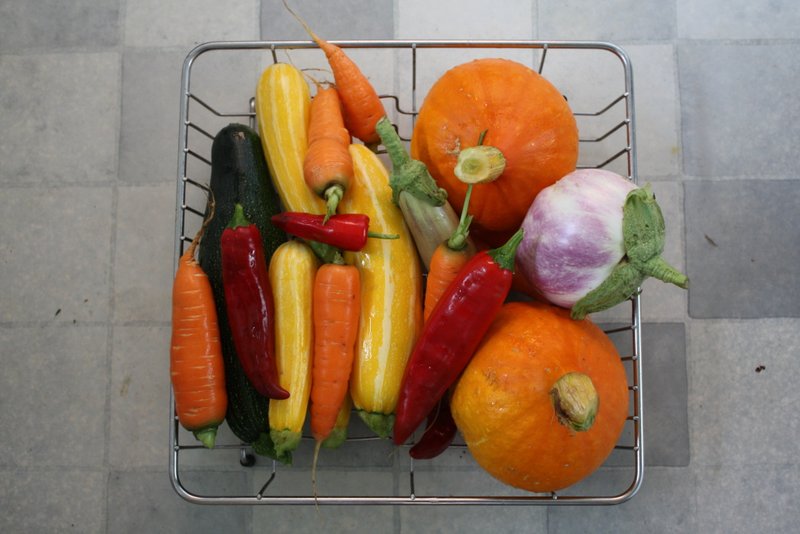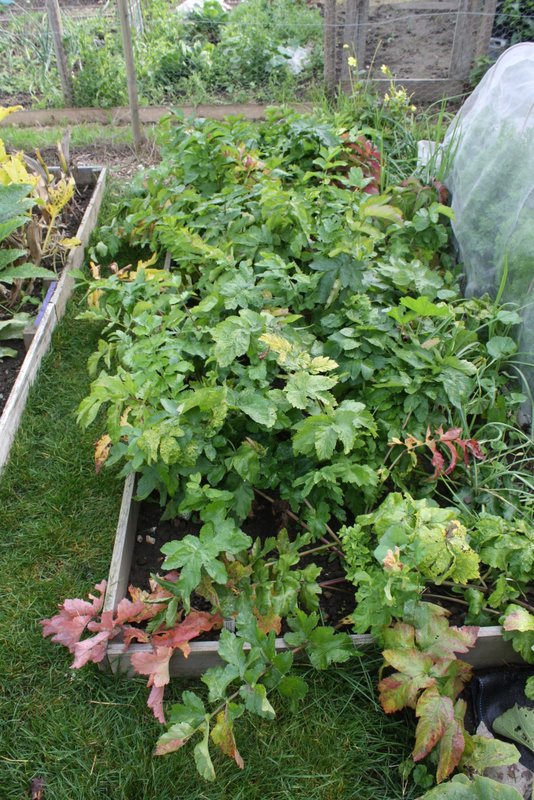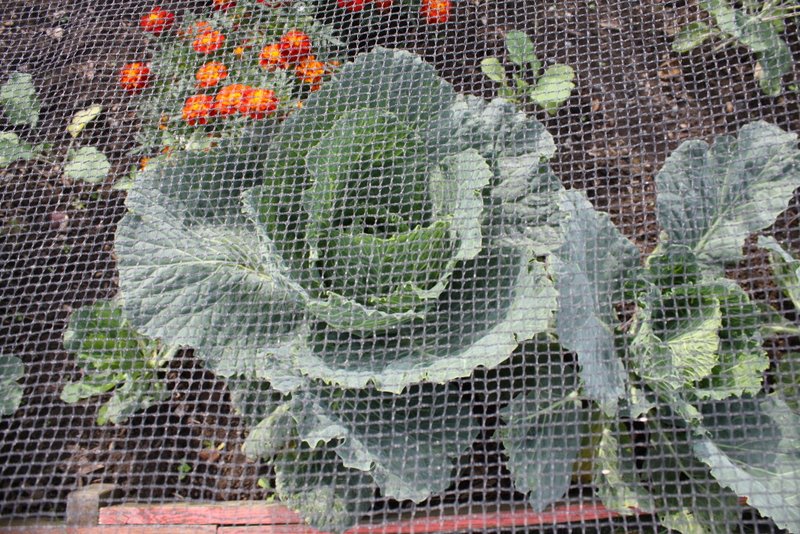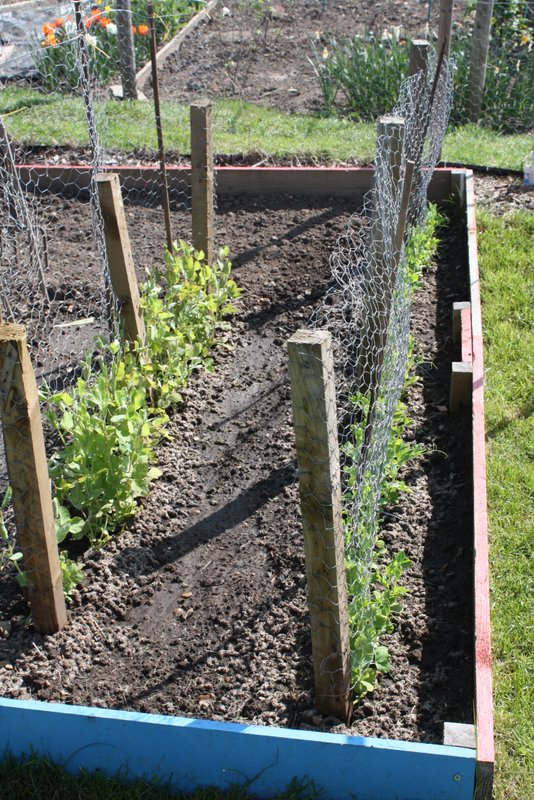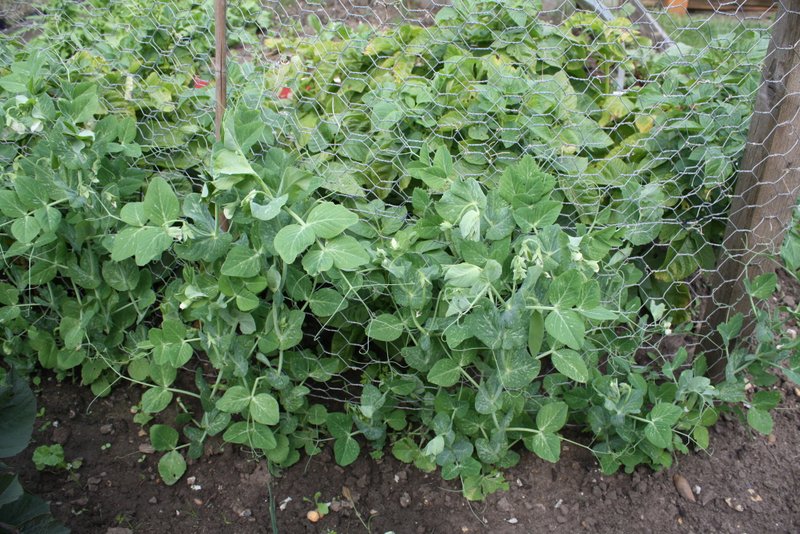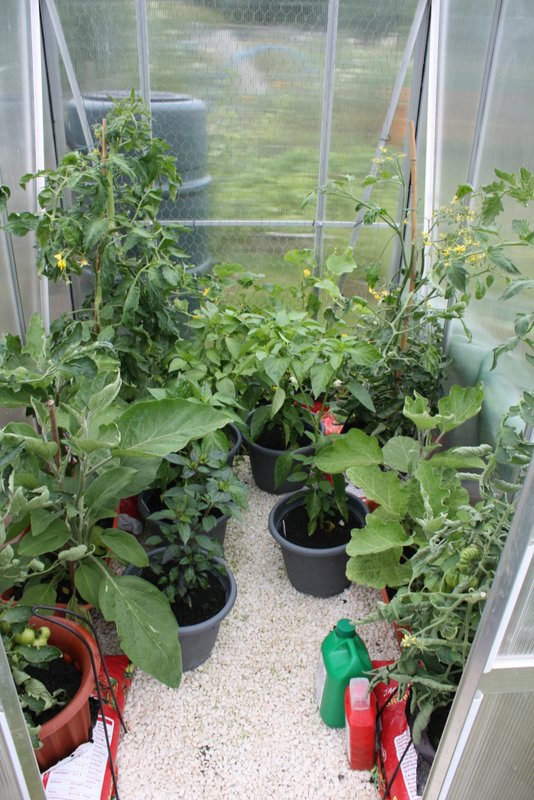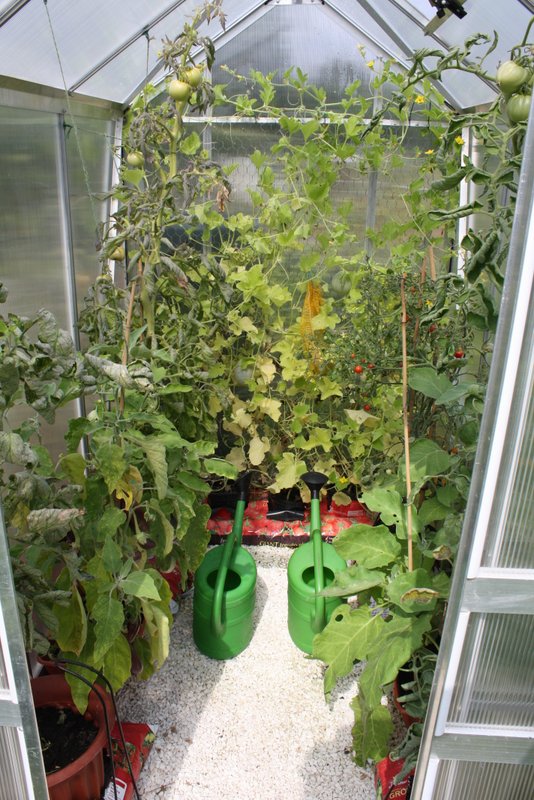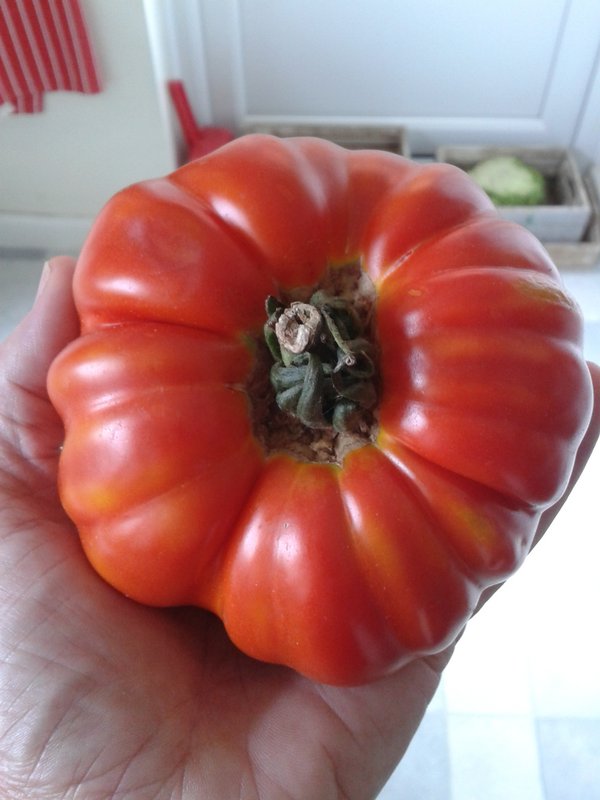For her birthday, Lynn asked for a couple of pear trees (avoiding the pair of pears pun) and Mark’s sister Laura, kindly obliged. Here is the birthday girl standing proudly between her new wards.
NEWS: In the allotment
Planting Out
A marker in the allotment year is the day that we get the greenhouse planted up. As it is unheated, we always need to be careful to make sure that any risk of a late frost has passed. This waiting is balanced against the fact that the plants are starting to outgrow the hardening off and window space at home. Mind you they look a lot smaller once they are planted out.
Elsewhere on the plot, the peas and beans also went out today and the early spuds are developing nicely.
New Plot
For a couple of years we have been walking past a weed-infested derelict plot on the way to our allotment. It was worked (fairly briefly) in 2011/2 and there are a couple of rather forlorn apple trees that have just about survived from then. We have been thinking about taking this plot on. Like ours it is half a standard plot, but would still represent a considerable extra commitment. Much of the ground work on the first plot was put in before the gardening business took off; starting a new plot from scratch would be a tougher proposition. Nevertheless, after some cogitation we decided to see whether this plot was available. It was and we’ve started the process of bringing it under control.
Changing seasons
After the glorious days of early summer, the weather has turned cooler, wetter and greyer. This has meant that some of the fruiting crops have not ripened on as well as we might have liked. Still, as earlier comments have made clear, things like tomatoes and aubergines have done much better than in the last two years and we are picking up very colourful harvests.
The onset of autumn means that our focus is starting to shift; so we are now concentrating on our winter (and especially Christmas) crops. The parsnips are developing very nicely and the winter greens are all in.
In the past we have grown Minicole cabbages for summer harvesting, red cabbages for autumn harvesting and pickling (Kalibos at the moment) and experimented with winter cabbages. This year we have grown Tundra for the first time based on a description that says it will stand through the harshest weather with little problem. That is yet to be tested, but we are very pleased with the way that the plants are growing on.
Peas
Peas are one of our favourite crops. Rather like sweet corn, peas are a crop that is best when eaten as soon as possible after picking. The difference between really fresh peas and those that have sat around for just a few days is really marked. It is an unwritten rule of the allotment that the first few pods don’t make it back to the house. They are either “tested” on the allotment, eaten while walking home, or on one occasion surreptitiously scoffed in a beer garden on the way home.
In the past we have grown Kelvedon Wonder on the allotment and Sugar Snaps at home. Kelvedon Wonder (on the right below) is ideal for producing both an early summer crop and a late sown autumn crop – both of which usually miss the pea moth season, so no maggoty peas.
This year we also tried Blauwschokker – a marrowfat pea for drying and storage. Fish and chips with our own mushy peas was the plan. The plants are very vigorous and both the flowers and pods are really attractive, it is always nice when the allotment looks good as well as producing a tasty harvest.
The peas cooked well and we have had our first serving of “pie ‘n’ peas”. Unfortunately, this cultivar matures during high summer meaning that it is exposed to pea moth. We therefore ended up sharing the harvest rather more than we’d hoped; not to mention chasing maggots around the front room carpet while we were shelling. Chatting around it seems that other people suffered quite badly this year, so we’ll give the Blauwschokkers another chance next year, but maybe harvest them earlier and freeze the peas rather than wait for them to dry on the vine.
The late sowing of Kelvedon Wonder (below) should be maggot free and make up for the loss of some of the marrowfat crop.
Tomatoes
After two really grotty years for tomatoes, things are finally looking more promising this year. The relatively dry weather earlier in the summer has meant that so far there has been no sign of the blight that has tormented us for the past couple of years – even inside the greenhouse. In early July the plants in the greenhouse were looking healthy and vigorous.
As the second photo shows the fruits are starting to ripen and here is a prize specimen.
We have always grown one or two Marmande plants, but an emerging contender for a large fruit is a new cultivar that we have tried for the first time – Ferline. We tried these this year as some blight resistance was claimed and we were thinking that in the event of another bad season we might at least get something. We weren’t expecting to get such large and tasty fruit from the descriptions and the plants’ vigour and productivity were a very pleasant surprise.

